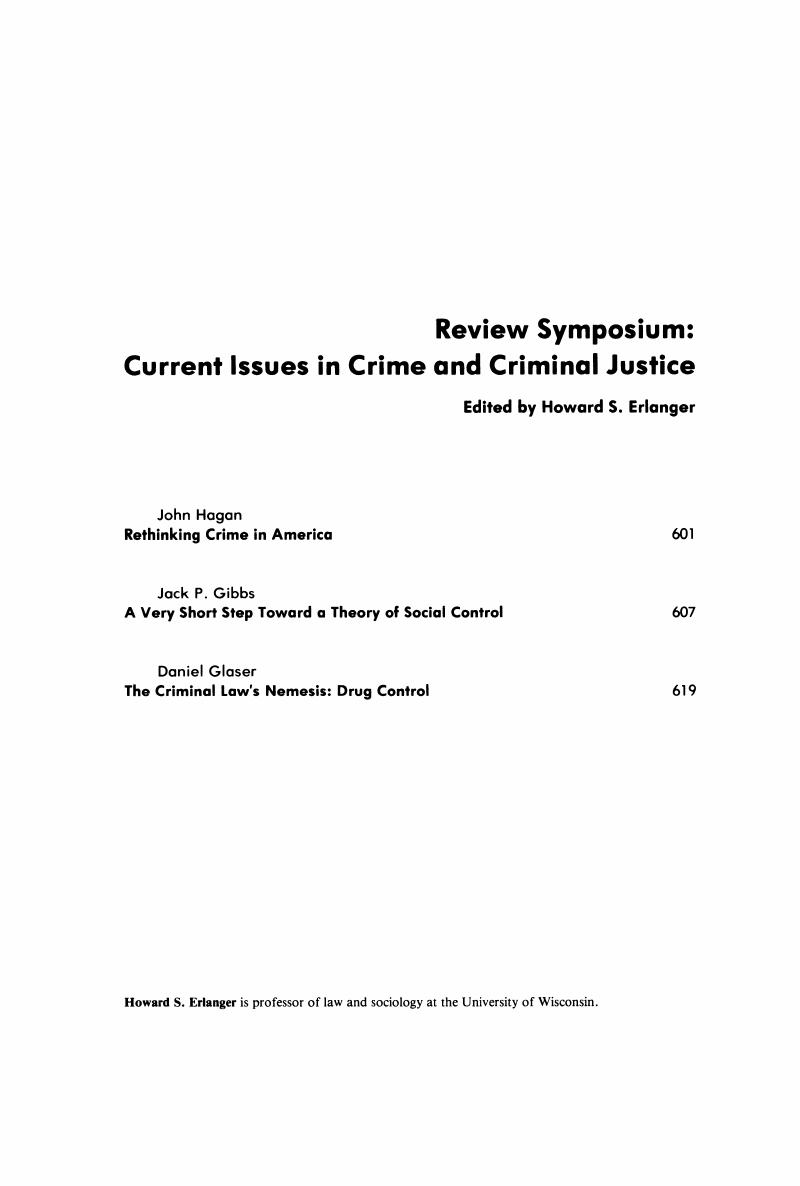No CrossRef data available.
Article contents
Rethinking Crime in America
Review products
Published online by Cambridge University Press: 20 November 2018
Abstract

Information
- Type
- Review Symposium: Current Issues in Crime and Criminal Justice
- Information
- Copyright
- Copyright © American Bar Foundation, 1985
References
1 Hagan, John, Modern Criminology: Crime, Criminal Behavior and Its Control ch. 1 (New York: McGraw-Hill, 1985).Google Scholar
2 See Gibbons, Donald, The Criminological Enterprise ch. 2–3 (Englewood Cliffs, N.J.: Prentice-Hall, 1979).Google Scholar
3 Wilson, James Q., Thinking About Crime (New York: Vintage, 1977).Google Scholar
4 Id. at 55.Google Scholar
5 Id. at 58.Google Scholar
6 Id.Google Scholar
7 Wilson is the coauthor with Richard Herrnstein of a recent book, Crime and Human Nature (New York: Simon & Schuster, 1985), that does deal with “ultimate” causes of crime, albeit biophysiological rather than sociological causes.Google Scholar
8 Scheingold does go on to discuss Marxist theories of crime, which increasingly return to the study of causes of criminal behavior. However, this discussion is truncated by Scheingold's decision not to discuss the new structural variations of this tradition. Scheingold indicates the reason for this decision is that “the more subtle Marxism … has not been incorporated into a comprehensive analysis of crime and the criminal process” (at 20n.). The importance I attach to the development of structural theories of criminal behavior is indicated below.Google Scholar
9 Wilson, supra note 2, at 199.Google Scholar
10 See Cohen, Lawrence, Felson, Marcus & Land, Kenneth, Property Crime Rates in the United States, 86 Am. J. Soc. 90 (1980); Lawrence Cohen & Marcus Felson, Social Change and Crime Rate Trends: A Routine Activity Approach, 44 Am. Soc. Rev. 588 (1979).Google Scholar
11 See Hagan, John, Gillis, A. R., & Simpson, John, The Class Structure of Gender and Delinquency: Toward a Power-Control Theory of Common Delinquent Behavior, 90 Am. J. Soc. 1151 (1985).Google Scholar
12 See Hagan, John & Leon, Jeffrey, The Philosophy and Sociology of Crime Control: Canadian-American Comparisons, 47 Soc. Inquiry 181 (1978); John Hagan, Toward a Structural Theory of Race, Crime and Gender: The Canadian Case, 31 Crime & Delinquency 129 (1985).Google Scholar
13 Canada has long had tighter and more effective gun control legislation than the United States, with restrictions focused particularly on handguns. See Friedland, Martin, A Century of Criminal Justice ch. 4 (Toronto: Carswell, 1984).Google Scholar

